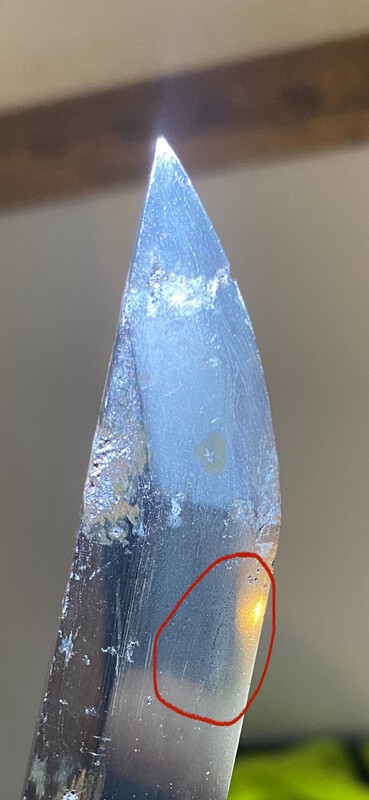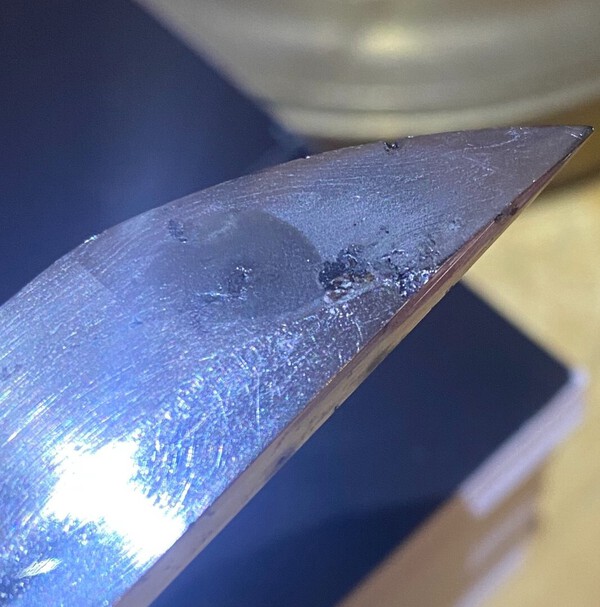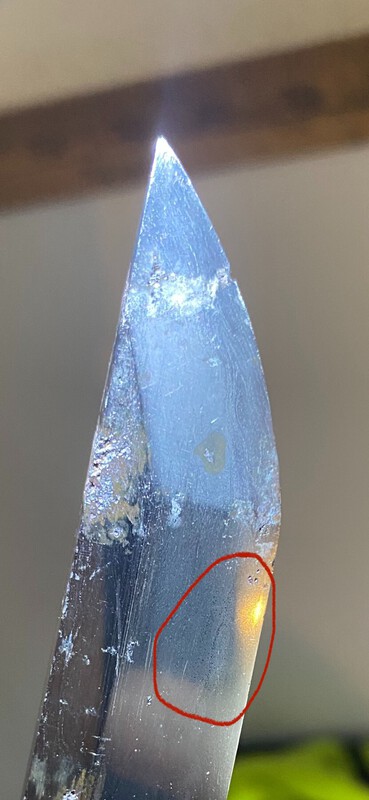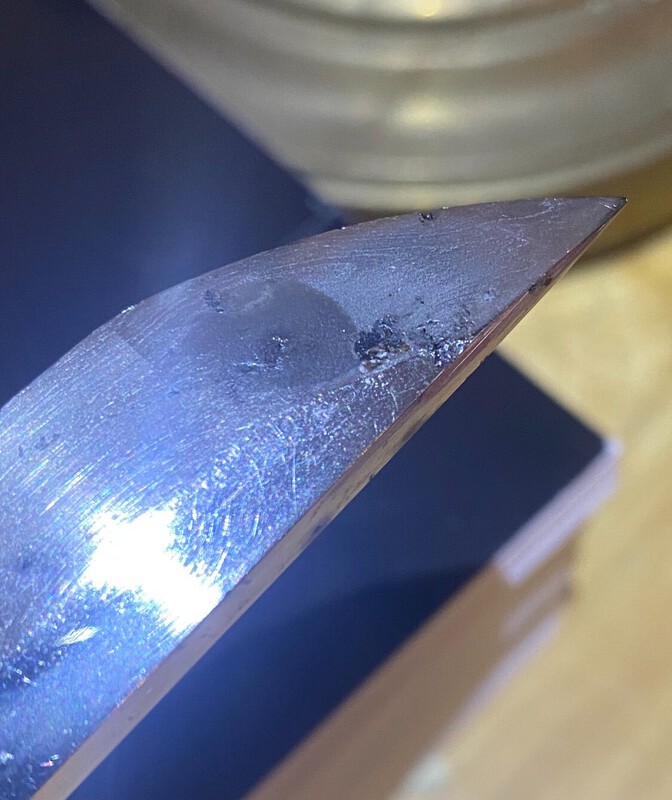-
Posts
1,124 -
Joined
-
Last visited
-
Days Won
7
Everything posted by Scogg
-
Love the analogy with two different Picasso paintings. Especially because painting and Nihonto are both in the fine art category I like to think, being able to recognize quality, is akin to getting into fine wine or beer. At first, you won't be able to tell the difference between a $20 dollar bottle and a $200 bottle. But as you research, and try a variety of wine of all qualities, you might slowly begin to recognize what makes wine "good", in addition to what your particular tastes are. You'll also likely learn to recognize what makes wine BAD After hundreds of hours, tastings, and dedicated study you might even begin to recognize terroir, vintages, or specific ingredients. You might find that you like Pinot, but not Cabernet. You might find that a winery with less-than-average wines, also makes one of your favorites! Anyway, I also struggle to recognize quality, but I hope to get there someday. Best of luck, Cheers! -Your friendly neighborhood brewmaster
-
Thank you Geraint! Very thoughtful input, and helpful information for me to know and remember. I appreciate it a lot Investigating the question "hakikake or kaen" has certainly got me looking at the boshi in depth, which has been very informative. I don't believe I'll be able to identify a smith, but learning how to identify features and characteristics has been a great learning experience. My goal is to try and recognize characteristics of gokaden (slowly...) Ya'll are the best! Cheers, -Sam
-
Here’s the boshi in question. Trying to determine if it’s hakikake or Kaen. Or perhaps my beginner eyes are leading me astray, and the boshi is something else entirely. Which always feels possible
-
It does a little, thank you! Definitely better illustrations and descriptions than my other books. Markus Sesko to the rescue per-usual If I am interpreting this correctly, it looks like Kaen is just a more aggressive version of Hakikake to the point of being flame like. It also appears to turn back into the mune a bit more I think I will just have to see more swords. Thanks to you both!
-
You know, thats a great answer/advice Applicable in many ways, within and outside of Nihonto
-
Hello everyone. I'm having a hard time determining the difference between Hakikake and Kaen boshi. Does anyone have a good side-by-side example of the two? The illustrations in my books leave a little up for interpretation, and I was hoping to see the differences on photos of real swords Does Kaen imply the turn back of the brush-stroke boshi toward the mune? Apologies if this has been covered, Cheers! -Sam
-
-
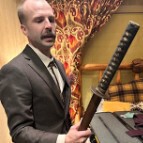
Unknown Japanese Sword followup.
Scogg replied to John H's topic in General Nihonto Related Discussion
Good to hear John. I imagine it will look really beautiful once it's restored, and at that point you will be able to learn a lot more from it Very expensive I know, but it will be a very special heirloom Cheers! -

Unknown Japanese Sword followup.
Scogg replied to John H's topic in General Nihonto Related Discussion
Hi John, I also have a sword that I inherited from my grandfather. I treasure it dearly, and plan to have it restored. Not only for my grandfathers sake, but because its the first traditionally made Japanese sword I had ever seen, and it had fascinated me my entire life. Only now as an adult, have I grown to truly appreciate it and it's history. It also represents my entry into this fascinating subject. My sword is a Shinto blade (1597-1780), and it will never be worth the money I will put into it, and that's OK. Preserving a sword so it survives the next hundred/s years is always a noble goal in my opinion I've been reading and studying for a couple years and am still very much a beginner. Take my observations with a grain of salt. Because of the condition your sword is in, its hard to say much about it. What I can say is that the shape is Shinogi-Zukuri, and the tip is Chu-Kissaki. It has a WW2 Tsuba (guard), and what looks like a WW2 leather saya(scabbard) cover. I don't recognize the Tsuka (handle) as war issued, but I haven't seen everything. It's signed Kiyonaga 二王清永 thanks to the translation from @vajo, and I would believe his opinion on age being Shinto (1597-1780) or Shinshinto (1780-1876) I can see the hamon, but not clearly enough to determine the type or style. Is there anything written on the other side of the Nakago(tang)?? Again, I am a mere learner, so grain of salt and everything. But I hope I helped explain some things Cheers! -

Unknown Japanese Sword followup.
Scogg replied to John H's topic in General Nihonto Related Discussion
Here is a link to his original post https://www.militaria.co.za/nmb/topic/45515-unknown-Japanese-sword/#comment-471911 best of luck! -
Hi Noah welcome to the forum, glad to see you’re getting good advice for this interesting sword If you’re doing this on your phone (like me!) - One simple way I’ve found to downsize images, is to take a screenshot on your phone of the image you’ve just taken. This will immediately copy the picture you’ve taken and make it a smaller size
-
Thank you! And appreciate the help. Shakudo nanako would be ideal, but I’m also open to a tsuba with a paulownia theme. I recently acquired this Choshu Kiyoshige tsuba, but unfortunately, it’s a hair too small to get past the full nakago Sharing because I find it an enjoyable tsuba and set, even though it doesn’t quite fit the search continues!
-
Hi Stephen, I think you’re thinking of me! I appreciate you looking out! It’s a really nice looking tsuba thats right on theme for my koshirae Here’s a link to my original post about it. Although I have concerns about what looks like maybe a casting seam? I’m just a newbie so I’m not certain of what I’m seeing, but I zoomed in on the photo below https://www.militaria.co.za/nmb/topic/45376-replacing-a-tsuba/
-
Thanks for your help Brian, and everyone else who contributed. It means a lot that ya’ll share your expertise with newcomers like me I’ve learned a lot, and have a lot to learn! Cheers, -Sam
-
After looking closer, I think I discovered why. As a beginner, Im prepared to be humbled again here I think the big sign that it’s suriage, is that the hamon continues into the corrosion of the nakago rather than tapering off just past the hamachi. In addition, the last character of kanji being so close to the nakagojiri
-
Ji-nie, that’s very exciting, thank you! Its been gratifying to admire and study
-
Oops, my mistake! I love the look of the long nakago nonetheless. My beginner is showing thank you for the correction
-
Reviving my thread from the dead (for the last time I promise!) Questions for the more experienced: Have I captured the Boshi in these images? Or am I just seeing signs of the hada in the kissaki? Also, is the red circled area an example of Nie and Chikei? Cheers! -Sam
-
Looks amazing Jon, congratulations! I love the long ubu nakago, and the hamon looks more interesting in your photos than the pervious pictures I saw Can’t wait to get my own first papered blade. Cheers!
-

Tips for finding inexpensive nihonto?
Scogg replied to axeman1984's topic in General Nihonto Related Discussion
I’m a beginner on a budget too. I’ve purchased from this seller on eBay - and peruse his inventory often. He’s on FB too. Great beginner pieces in there, and good descriptions https://www.ebay.com/str/uzunihonto ebay is always a bit scary though. I try to stick to sellers I’m familiar with or have been recommended -
Congratulations Jon, it looks really nice! I imagine you can’t wait to see it in-person Looking forward to seeing more photos
-
That's a bummer, sorry you missed out on these. Despite my previous comment, I was crossing my fingers that you would get these at a good price. It would have been great to see them disassembled with better photos Best of luck, -Sam
-
I'm no help when it comes to evaluation, but I am looking forward to seeing this collection in SF Thanks for sharing this sneak peak -Sam
-
Hand carved or chiseled stone is a good comparison. Certainly a bold looking habiki! It definitely caught my eye Cheers!
-
I’ve interacted with Teddy on Reddit several times. He’s always been forthcoming and helpful to me and other posters. He’s generally just committed to learning about tosogu, and what better way than to try it For what it’s worth - A lot of folks on the Reddit forums focus on modern production katanas. Nihonto don’t show up as often, and there’s only about 70 members in the tosogu subreddit. I think it’s a pretty cool prospect to some people to add some home-made flair to their new production swords. Welcome to the forum Teddy! Personally I look forward to seeing your work










